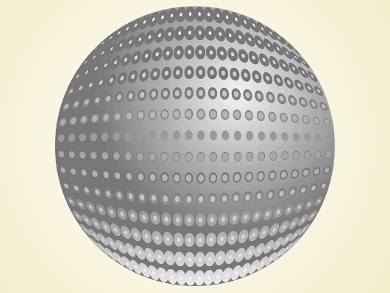Hollow carbon spheres (HCSs) have large surface areas, conduct electricity, and are mechanically stable. They can be used in, e.g., catalysis, gas separation, fuel cells, and batteries. However, it has been difficult to control the formation of pores in the carbon shell with existing syntheses.
Shiyang Bai, Beijing University of Technology, China, and colleagues have developed a method to prepare monodisperse HCSs with very high surface areas and tunable, large numbers of micropores. The team used silica spheres as a template and coated them with polymerized resorcinol and formaldehyde as a carbon precursor, mixed with tetraethyl orthosilcate (TEOS) as a silica precursor. The coated spheres were then carbonized under a nitrogen atmosphere at 350–600 °C. In a final step, the silica template and the silica parts of the coating were removed using HF etching.
The resulting hollow carbon spheres have higher surface areas and pore volumes compared to HCSs that were prepared without silica in the coating. The higher number of pores also causes a 1.5 times higher CO2 absorption capacity compared to “normal” HCSs. According to the researchers, the synthesized carbon spheres are promising for use in the separation of gases such as CO2 and N2.
- Hollow Carbon Spheres with Abundant Micropores for Enhanced CO2 Adsorption,
Xuena Li, Shiyang Bai, Zhengjian Zhu, Jihong Sun, Xiaoqi Jin, Xia Wu, Jian Liu,
Langmuir 2017.
DOI: 10.1021/acs.langmuir.6b04131

![Synthesis of [c2]Daisy Chains via Mechanochemistry](https://www.chemistryviews.org/wp-content/uploads/2025/04/202504_RotaxanesWithSolidStateMechanochemistry-125x94.png)

